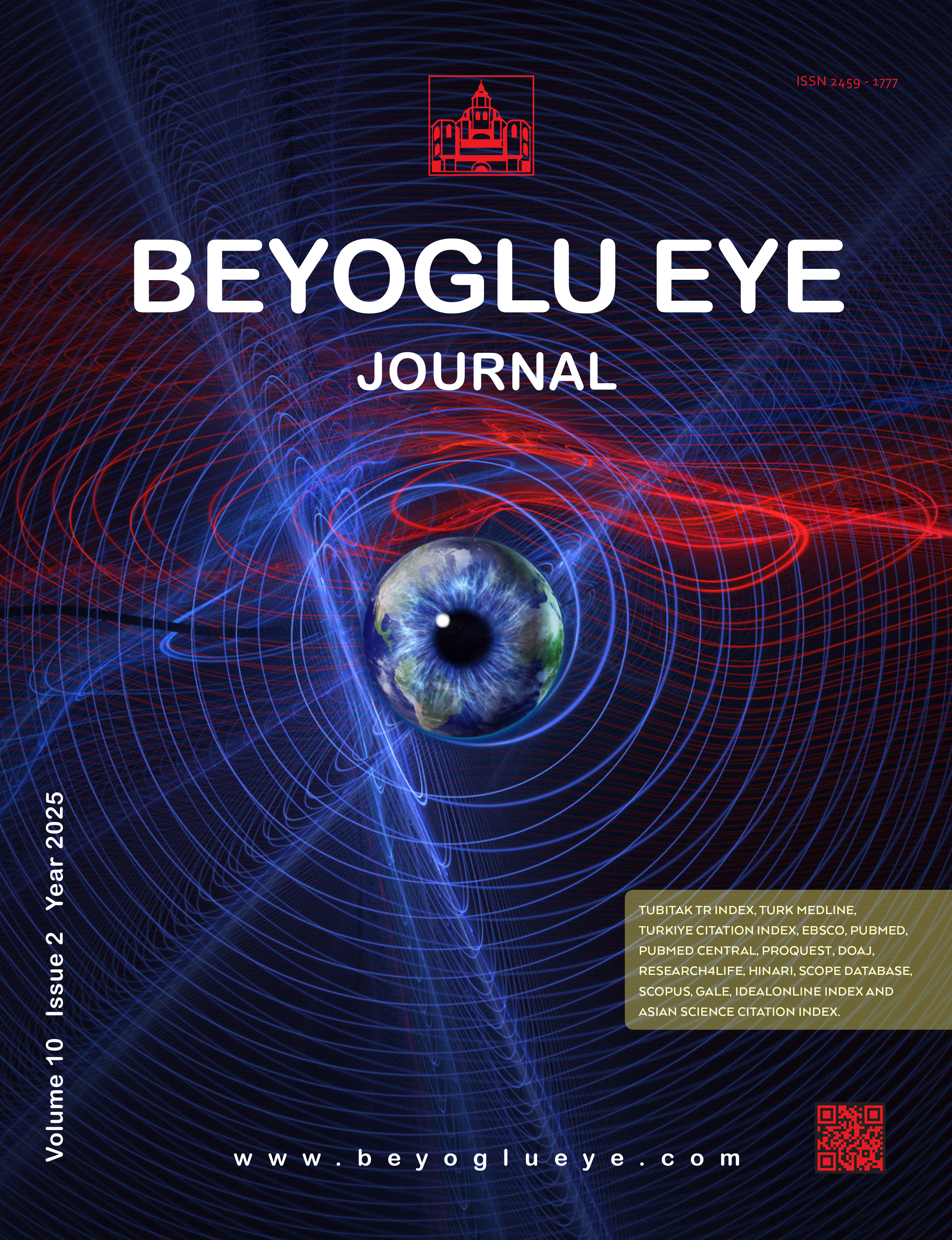
The Effect of Thyroid Eye Disease on Corneal Biomechanical Properties
Melis Cansu Comert1, Sezen Yılmaz1, Ayse Yildiz Tas2, Afsun Sahin21Koç University, Faculty of Medicine, Istanbul, Türkiye2Department of Ophthalmology, Koç University Hospital, Istanbul, Türkiye
OBJECTIVES: The aim of this study was to identify corneal biomechanical parameters measured by ORA in patients with TED compared to the healthy group. The NOSPECS classification of patients is used to assess the relation between biomechanical changes and disease severity
METHODS: We included 22 TED patients, diagnosed with TED for more than five years, and 43 healthy participants. The NOSPECS classification was assessed as mild (grade 1-3) and severe (grade 4-6) disease. For each group, corneal hystere-sis (CH), corneal resistance factor (CRF), central corneal thickness (CCT), Goldmann-correlated intraocular pressure (IOPg) and corneal compensated intraocular pressure (IOPcc) parameters were measured by ORA.
RESULTS: The mean age was 38.8±11.6 years for the TED patients and 42.9±15.58 years for the control group. For TED patients and healthy volunteers, the mean levels of CRF, CH, and CCT were measured as follows: 10.43±2.04 vs 10.28±1.91mmHg, p=0.67; 10.18±1.81 vs 10.21±1.68 mmHg, p=0.90; 550.31±35.73 vs 545.23±37.91 µm, p=0.47, respec-tively. These values were not significant between groups, but they were significantly higher in females compared to males in TED patients [CRF;10.68 (IQR: 9.49-12.14) vs 8.96 (IQR: 8.04-9.92) mmHg, p=0.002, CH; 10.43 (IQR: 9.48-11.25) vs 8.58 (IQR: 7.90-9.95) mmHg, p=0.003 and CCT; 554.25 (IQR: 536.05-579.52) vs 527.40 (IQR: 492.25-545.90) µm, p=0.014]. CRF values were negatively correlated with NOSPECS score (r=-0.317, p=0.036) and significantly higher CRF was observed in mild patients compared to severe disease (11.43 (IQR: 10.14-12.87) vs 9.46 (IQR: 8.75-10.28) mmHg, p=0.008).
DISCUSSION AND CONCLUSION: We found a significant gender effect on corneal biomechanical parameters of TED patients. CRF, CH and CCT values were significantly higher in females compared to males with TED. The clinical severity score of TED showed negative correlation with CRF. CRF value might be a useful parameter in follow-up of TED patients in clinical practice.
Manuscript Language: English








